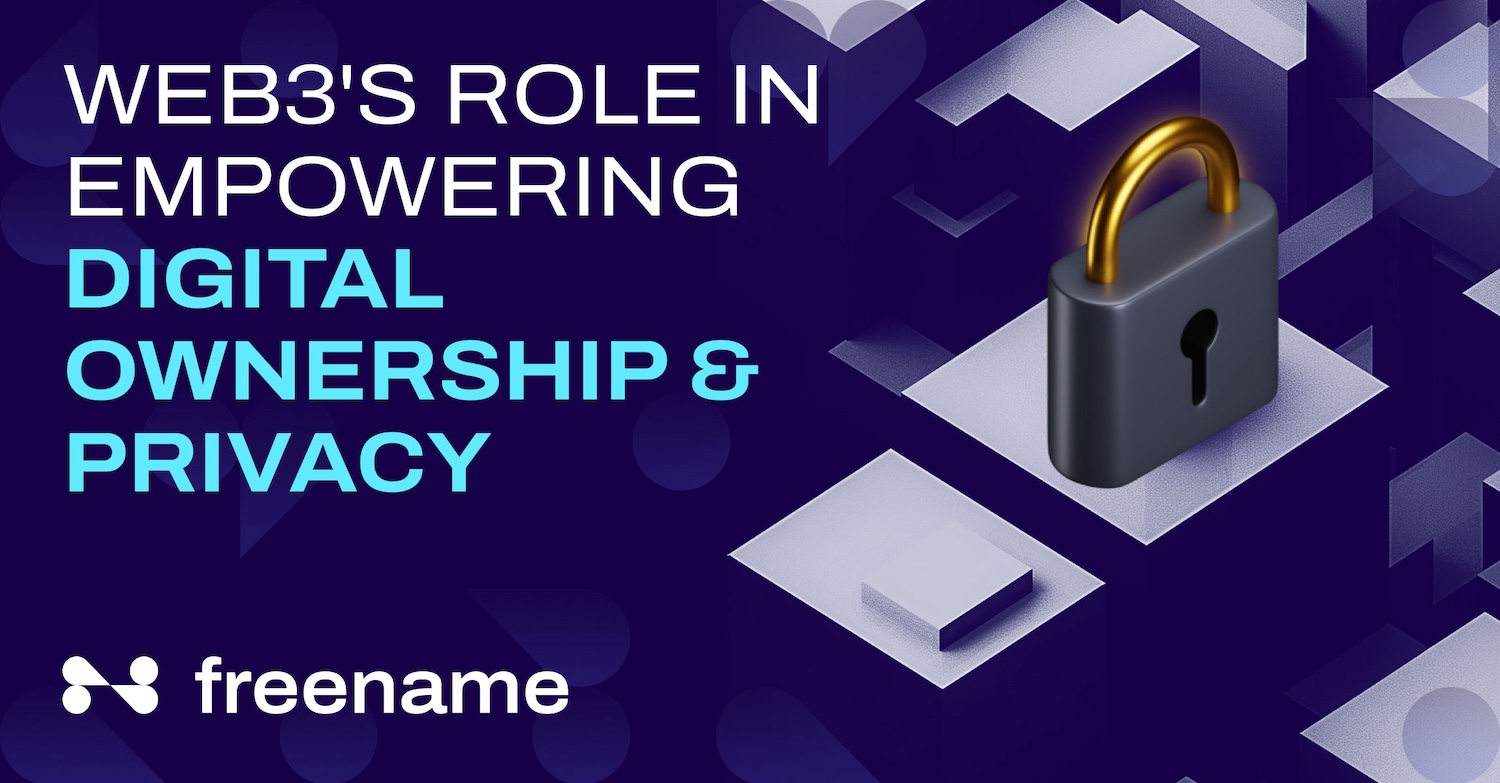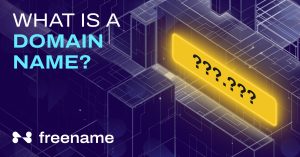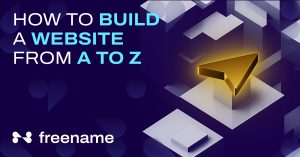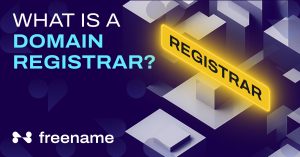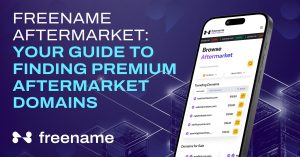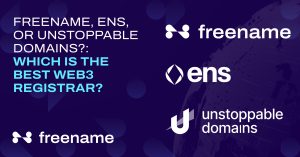Ever since it was created, the Web has changed a lot. During the first stage of its development, Web 1.0, people only read information already published on the web and didn’t publish anything themselves.
Then came Web 2.0, or The Social Web, where users can create their content and interact with other users, commonly believed to have come at the expense of giving up control over everything by central agencies and personal data protection concerns.
Web3 brings the concept of decentralization to its heights with individuals owning their data and communicating directly without intermediaries such as centralized servers like those used in previous versions of the internet. This change greatly affects digital rights management systems because they give more power to users over their privacy than before when it comes to cyberspace-related matters, unlike any other previous iteration that could have done so.
In this article, we will explore how Web3 empowers digital ownership and how to get the most out of it.
How Web3 Empowers Digital Ownership
In Web 2.0, users create content and data, but ownership often resides with the platforms. Web3 disrupts this model by giving users true digital ownership.
Non-Fungible Tokens (NFTs)
NFTs are unique digital tokens issued on blockchains. Each NFT represents ownership of a specific digital asset, like artwork, music, or in-game items. The creation and ownership of NFTs are recorded on the blockchain, ensuring immutability and verifiable proof of ownership. This information is publicly accessible, allowing anyone to verify an NFT’s authenticity and ownership history.
NFTs disrupt the traditional model where digital assets reside on centralized platforms, and ownership often needs to be clarified. By owning an NFT, users have verifiable proof of ownership for their digital assets. This empowers them to:
- Sell or trade their assets: Users can freely sell or trade their NFTs on decentralized marketplaces, eliminating the need for intermediaries and capturing a larger value share.
- Benefit from appreciation: As the demand for NFTs increases, so does their potential value. Owning an NFT allows users to benefit from this appreciation over time.
- Control usage rights: Depending on the NFT’s smart contract (a set of pre-programmed rules), ownership may have specific usage rights. For example, an NFT representing a digital artwork might grant the owner the right to display it or create derivative works.
Example: An artist creates a digital painting and mints it as an NFT on a blockchain. The NFT acts as a digital certificate of ownership, permanently linked to the artwork on the blockchain ledger. Anyone can verify the authenticity and ownership history of the artwork by viewing the NFT record. The artist can sell the NFT in a decentralized marketplace, directly connecting with collectors and capturing a larger portion of the sale than traditional art sales. Upon purchasing the NFT, the collector owns the digital artwork and potentially gains exclusive rights based on the smart contract, such as displaying it in a virtual gallery or receiving royalties from future sales.
Fractional Ownership
Blockchain technology allows for dividing digital assets into smaller, tradable units. This process, called tokenization, creates fractions of the original asset represented by individual tokens. These tokens can be bought and sold on secondary markets, enabling fractional ownership of valuable digital assets.
Fractional ownership opens up access to previously exclusive digital assets. Here’s how it empowers users:
- Increased investment opportunities: By dividing assets into smaller units, individuals with less capital can participate in the ownership of high-value digital assets like rare artwork or collectibles.
- Improved liquidity: Fractional ownership allows for easier asset buying and selling than whole ownership. This increased liquidity benefits both sellers and investors.
- Collective ownership: Through fractional ownership models, communities can collectively own and manage digital assets, fostering collaboration and shared decision-making.
Example: A valuable piece of virtual real estate within a popular metaverse game exists as a single digital asset. This virtual land can be divided into smaller tokens through tokenization, allowing multiple users to co-own the property. Each token represents a fraction of the total ownership rights. Users can buy and sell these tokens on a decentralized marketplace, enabling easier entry and exit than purchasing the entire virtual land parcel. This model fosters broader participation in the ownership of high-value digital assets within the metaverse.
Decentralized Marketplaces
Decentralized marketplaces (darts) leverage blockchain technology to facilitate peer-to-peer (P2P) trading of digital assets. Unlike traditional online marketplaces controlled by a central authority, darts operate without intermediaries. Smart contracts govern transactions on darts, automating processes and ensuring the secure execution of trades. These contracts define the terms of the sale, including price, ownership transfer, and potential royalties for creators.
These ownership mechanisms empower users to:
- Monetize their creations: Artists, musicians, and content creators can directly sell their work or receive royalties through smart contracts, automated agreements that execute based on predefined conditions.
- Control access and usage: Users can determine who can access their data and for what purpose. This fosters greater transparency and control over how their digital footprint is utilized.
- Benefit from value appreciation: Owning digital assets like NFTs offers the potential for value appreciation as demand increases, allowing users to benefit from the growth of the Web3 ecosystem.
Example: An independent musician composes a song and turns it into an NFT. They list the NFT for sale on a dart specializing in music NFTs. Potential buyers can browse the marketplace, view the song’s details, and purchase the NFT directly from the musician. Upon purchase, a smart contract automatically transfers ownership of the NFT from the musician to the buyer and any royalties specified in the contract (e.g., a percentage of future sales going to the artist). This eliminates the need for music distribution platforms and empowers the musician to connect directly with fans and capture a larger revenue share.
How Web3 Enhance Users’ Privacy
Web 2.0 platforms collect vast amounts of user data, often without explicit consent, and leverage it for targeted advertising. Web3 offers solutions for regaining control of your data privacy:
Decentralized Storage
Decentralized storage (DS) refers to storing data across a network of computers instead of centralized servers controlled by companies like Google or Amazon. This distribution eliminates single points of failure and makes data breaches more difficult. Data is typically divided into smaller pieces and encrypted before being stored across the network.
Decentralized storage offers several advantages for user privacy:
- Reduced Risk of Data Breaches: Centralized servers are prime targets for hackers. By storing data across a distributed network, attackers have no single point of entry. Even if a portion of the network is compromised, the rest of the data remains secure.
- Enhanced User Control: Users have greater control over who can access their data stored on decentralized networks. Access can be granted or revoked through permissioning systems, allowing users to choose what data they share and with whom.
- Improved Censorship Resistance: Decentralized storage makes it more difficult for governments or other entities to censor information. Since data is not stored in a single location, it cannot be easily removed or altered.
Imagine a social media dApp built on a decentralized storage network. Instead of storing user posts and profiles on a central server, the data is distributed across multiple computers in the network. If one computer is hacked, only a fraction of the data might be compromised. Users can choose to encrypt their profiles and posts, adding an extra layer of security. Permissioning systems allow users to control who can see their information, limiting data exposure to unauthorized individuals.
Technical Considerations:
While DS offers significant privacy benefits, there are some technical aspects to consider:
- Scalability: Storing vast amounts of data across a decentralized network can be challenging from a scalability standpoint. As the user base grows, ensuring efficient data storage and retrieval becomes crucial.
- Latency: Accessing data stored on a decentralized network may experience higher latency than centralized servers located geographically closer to users. This could impact user experience for applications relying heavily on real-time data access.
- Security: While distributed networks mitigate some risks, DS solutions are still susceptible to vulnerabilities. Securely storing and encrypting data across the network and robust access control mechanisms remain a focus for ongoing development.
Zero-Knowledge Proofs (ZKPs)
ZKPs are cryptographic techniques that allow users to prove they possess certain information without revealing it. Imagine proving you’re above 18 to access a website without disclosing your birthdate. ZKPs achieve this through complex mathematical algorithms and cryptography.
ZKPs empower users with greater control over their data by enabling them to:
- Selective Disclosure: Users can prove they meet specific criteria (e.g., age requirement or membership status) for accessing a service without revealing all their underlying data. This minimizes the amount of personal information shared with online platforms.
- Enhanced Authentication: ZKPs can be used for secure authentication without relying on traditional password systems, which are vulnerable to breaches. This reduces the risk of identity theft and unauthorized access to user accounts.
- Improved Regulatory Compliance: ZKPs can help organizations comply with data privacy regulations like GDPR (General Data Protection Regulation) by allowing them to verify user eligibility without collecting unnecessary personal data.
A music streaming app might require users to be 18 or older to access certain content. Instead of asking users to upload their passports or other identification documents, the app could leverage ZKPs. Users would prove their age group through a ZKP without revealing their birthdate or any other personal information. This protects user privacy while ensuring the app complies with age restrictions for specific content.
Technical Considerations:
While ZKPs offer promising solutions for data privacy, there are some technical complexities:
- Computational Cost: Generating and verifying ZKPs can be computationally expensive, requiring significant processing power. This may limit their scalability for high-volume applications.
- Ongoing Development: ZKPs are a relatively new technology that undergoes continuous research and development. Improvements are needed to enhance efficiency and ensure their robustness against potential attacks.
- Standardization: As the use of ZKPs in Web3 applications grows, establishing standard protocols for their implementation will be vital for interoperability and broader adoption.
Self-Sovereign Identity (SSI):
Self-Sovereign Identity (SSI) is a shift in user identity management within the online world. Traditionally, platforms like Facebook or Google control your digital identity and its associated data. SSI empowers users to create and manage their digital identities independently of any centralized authority. These identities are represented by Decentralized Identifiers (DIDs), essentially unique identifiers tied to users, not platforms.
SSI offers a more privacy-centric approach to user identity management:
- User-Controlled Data: Users have complete control over the data included in their DID profiles. They can choose what information to share with different services, minimizing unnecessary data exposure.
- Reduced Reliance on Third Parties: SSIs eliminate dependence on centralized platforms for identity verification. Users can manage their credentials and present them selectively to dApps based on their needs.
- Enhanced Security: DIDs are cryptographically secured, making them less susceptible to identity theft or unauthorized modifications than centralized identity management systems.
Imagine a user creating an SSI profile containing different sections for various online activities. They might have a professional section with work experience and certifications for professional networking dApps. Another section could hold information relevant to their hobbies, suitable for accessing online gaming platforms. Users can control which sections of their profile they share with specific dApps, ensuring their data exposure is minimized and relevant to the context. This empowers them to manage their online presence and data privacy more effectively.
Technical Considerations:
While SSI holds immense potential for data privacy, there are some technical considerations to address:
- Interoperability: Establishing standardized protocols for DIDs and credential formats across different dApps is crucial for wider adoption. Users should be able to leverage their SSI profiles seamlessly across various Web3 applications.
- Usability: Simplifying SSI creation and management for users with varying technical expertise is essential for mainstream adoption. User-friendly interfaces and intuitive workflows will be critical in this regard.
- Regulation: Clear regulatory frameworks for SSI implementation are still evolving. Collaboration between governments and industry stakeholders is necessary to ensure the responsible use of SSIs and address potential privacy concerns.
The Foundation of Decentralization
Web3 is built on distributed control and data across a peer-to-peer network. Unlike Web 2.0, where power lies with large tech companies like Facebook and Google, Web3 leverages blockchain technology to create a trustless system.
Here are some key technologies that underpin Web3:
- Blockchain
Imagine a giant, public ledger distributed across thousands of computers worldwide. Each page of this ledger (called a block) contains verified information, and once a block is added, it cannot be altered or deleted. This is achieved through cryptography, a complex system of codes and algorithms. When a new transaction occurs (like creating a digital artwork), it’s verified by multiple computers on the network and added as a new block to the ever-growing chain. This immutability ensures a verifiable record of ownership for digital assets stored on the blockchain. Anyone can access the ledger and see the history of transactions, fostering transparency and trust in digital ownership.
- Decentralized Applications (dApps)
Think of dApps as applications built on top of blockchains, similar to how apps run on your phone’s operating system. However, unlike traditional apps, dApps operate independently of any central authority. The code for a dApp is stored on the blockchain, accessible to anyone, and its functionality is governed by pre-defined rules (called smart contracts). This eliminates single points of failure where a central server can restrict access or modify user data. In the context of data privacy, dApps empower users to interact directly with the application without relying on a third party to manage their data. For example, a music streaming dApp could store user listening history on the blockchain, allowing users to control who can access this data and potentially monetize it themselves.
- Cryptocurrencies
We’re familiar with traditional currencies like dollars or euros. Cryptocurrencies are digital assets that exist solely on blockchains. Like conventional currencies, they can be used for value exchange within the Web3 ecosystem. However, cryptocurrencies also often serve as a governance mechanism for dApps. Cryptocurrency ownership usually means holding “tokens” that represent voting rights within the dApp. Users holding these tokens can participate in voting on decisions that affect the application’s development, such as updates to its features or fee structures. This fosters a more democratic and user-centric approach to data management within dApps.
- Decentralized Identifiers (DIDs):
Imagine a unique identifier that is tied to you, not the platforms you use online. DIDs are digital IDs stored on the blockchain that users control. Unlike traditional user accounts managed by platforms like Facebook, DIDs give users complete control over their data and how it’s shared. Users can create portable DID profiles containing specific information they choose to share with different dApps. This allows users to manage their data reputation and decide which information they share with particular services. For example, you could have a DID profile for a social media dApp containing your public name and profile picture. In contrast, a separate DID profile for a financial dApp could hold only your verification credentials. This granular control over data exposure enhances user privacy within the Web3 ecosystem.
By leveraging these technical innovations, Web3 disrupts the centralized model of Web 2.0, firmly placing ownership and control of digital assets and data in users’ hands. This shift empowers individuals to participate in the digital economy on their own terms, fostering a more secure and user-centric online experience.
Web3: Challenges in Digital Ownership and Privacy
While Web3 holds immense potential for digital ownership and privacy, it’s still in its early stages of development. Here are some key challenges to consider:
Regulation
- Challenge: The need for clear regulations surrounding cryptocurrency, NFTs, and dApps creates uncertainty for businesses and users. Governments are still grappling with how to best regulate this new landscape without stifling innovation. This uncertainty can deter potential users and companies from entering the Web3 space due to fears of legal repercussions or market manipulation.
- Considerations: Governments, industry experts, and user communities must collaborate to establish clear and adaptable regulations that foster innovation while mitigating risks. These regulations should focus on preventing fraud, protecting investors, and ensuring fair competition without stifling technological advancement.
Security
- Challenge: While generally secure, blockchain technology and dApps have vulnerabilities. Smart contract exploits and hacks on decentralized exchanges have highlighted the need for ongoing security improvements. Users’ digital assets and data could be compromised if dApps or underlying blockchains experience security breaches.
- Considerations: Ongoing research and development are crucial to enhance the security of smart contracts and blockchain protocols. Security audits for dApps should become standard practice, and user education on best practices for securing their digital assets is essential. Also, fostering a responsible development culture within the Web3 community can help address potential security vulnerabilities.
User Interface (UI) and User Experience (UX)
- Challenge: Web3 applications can be complex to navigate for new users. Technical jargon, unfamiliar interfaces, and the need to manage private keys can create a barrier to entry for the mainstream user base. This complexity can limit the adoption of Web3 and prevent users from fully benefiting from the potential of digital ownership and data privacy features.
- Considerations: Simplifying UI/UX design is crucial for broader Web3 adoption. Developers need to focus on creating intuitive interfaces and user journeys accessible to users with varying levels of technical expertise. Educational resources and clear documentation can further empower users to navigate the Web3 space with confidence.
Digital Divide
- Challenge: Access to the internet and the technical knowledge required to use Web3 tools are unevenly distributed. The digital divide creates an accessibility gap, potentially excluding individuals with limited internet connectivity or those unfamiliar with blockchain technology and cryptography. This could lead to a situation where Web3 ownership and privacy benefits are not equally available.
- Considerations: Initiatives aimed at bridging the digital divide are essential. This can involve expanding internet access in underserved areas, providing educational resources on Web3 concepts, and developing user-friendly tools that cater to a broader range of technical literacy levels. Fostering inclusivity in Web3 development and ensuring equitable access to its benefits is crucial for a healthy and sustainable digital ecosystem.
Scalability
- Challenge: As the user base for Web3 applications grows, current blockchain technologies may face scalability challenges. Processing large volumes of transactions and storing ever-increasing amounts of data can become inefficient on existing blockchain networks. This could lead to slow transaction times and increased fees, potentially hindering user experience and limiting the growth potential of Web3.
- Considerations: Ongoing advancements in blockchain technology, such as layer-2 scaling solutions and alternative consensus mechanisms, are crucial for addressing scalability challenges. Research and development efforts focused on improving transaction throughput and reducing fees ensure Web3 can cater to a larger user base.
Web3: A New Dawn for Digital Ownership and Privacy
Web3 is still a work in progress, but its potential to empower users with control over their digital assets and data is undeniable. Platforms like Freename offer a path toward a more equitable and secure online experience. As the ecosystem matures, addressing technical challenges, fostering collaboration, and ensuring inclusivity will be crucial for Web3 to usher in a new digital ownership and privacy era for all.

